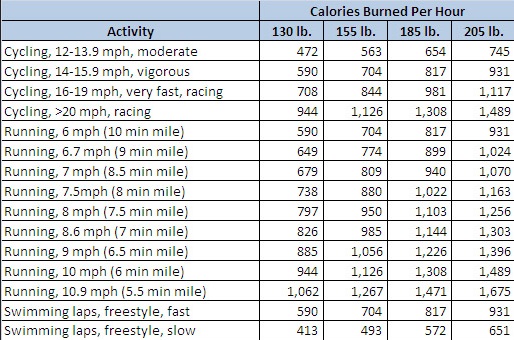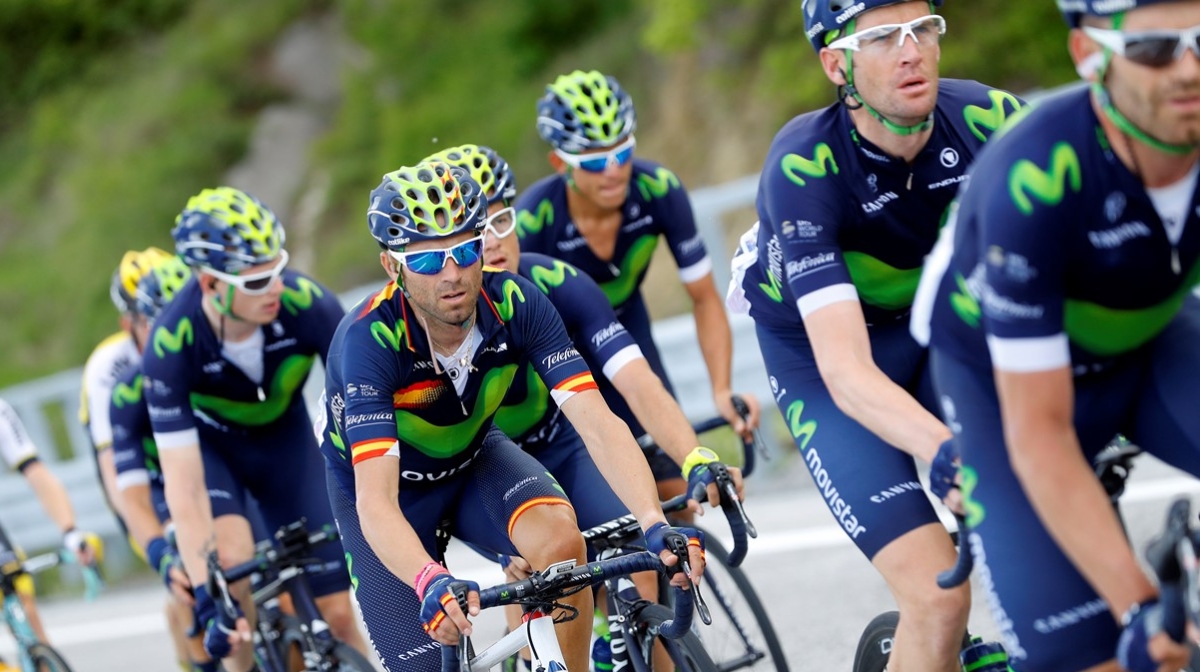Weight loss is a topic discussed by many, not just cyclists. So when looking for ways to tone up the question ‘does cycling burn fat?’ is a popular one to come up in conversation. In short, yes, cycling does burn fat. Your body burns energy on a daily basis which in turn, cuts down calories which all add up to fat. During intense exercise such as cycling, this process is sped up and more energy is used, thus more fat is burnt.
This article explores how cycling burns fat and suggest some training plans to target this specific need.
How does the body burn fat?
The body burns fat just functioning on a daily basis and burns energy just by keeping us alive. Even whilst you are sleeping your body will use up calories to pump the blood around your body and keep your heart beating. The body will burn carbohydrates first, then fats, then proteins. If the body is given more carbohydrates than it needs to function on a daily basis then the body will turn any excess energy that it does not need into fats, which in turn, results in us carrying more weight than some of us wish to. Having said this, it isn’t as clear cut as this; although your body will burn carbs first it will burn some fat at the same time. Once all the carbs have been depleted it will then use the fat stores for energy. The fat holds a huge amount of calories, for example one pound of fat equals to 3,500 calories but the body finds it difficult to use this as a effective energy source.
Different types of people burn different amounts of energy depending on their height, age, gender and metabolism. So every person will have to adapt their diet and eating habits slightly differently in order to stay at a healthy weight.
If you have an office job and lead a normal life, then the NHS recommends 2,000 calories for women and 2,500 for men, this is enough calories for the average person to maintain good health. In contrast, if you are an athlete and are training, racing daily/weekly then you will ultimately need more calories. This again will vary on how many hours you are training for, what intensity you are exercising at, your age and what gender you are.
So, given that our bodies naturally burn fat, then the answer to ‘does cycling burn fat?’ is inevitable. Read on below for PBK’s explanation.
Does Cycling Burn Fat? Cyclists and Calories:
Typically your body has enough carbohydrate to last you for 1 hour of moderate exercise. Once all the carbohydrates have been depleted your performance will start to drop off and your body will have to work harder to use up more fat as an alternative energy source, this will essentially lead to you losing weight.
Men will tend to lose more calories than women as they usually have more muscle mass. The more muscle you have the more calories you will lose as muscle requires more energy to maintain it. As younger people carry a little more muscle mass it is slightly easier for them to keep weight off.
It is hard to say exactly how many calories you will burn unless you have your exact details and activities to use as an accurate guide – a lot of cycle computers these days have a built in facility to let you know how many calories you have lost, but as a rough guide you will lose approx 700-800 calories per hour and a little less for women whilst cycling at a moderate pace of 14-16mph.

Image source: www.ilovebicycling.com
What type of training do I need to do to burn fat?
Riding in the morning before having breakfast will help in losing a few extra pounds. Over-night your body will have used up most of its carbohydrate stores, so exercising before eating in the morning will start to use the fat stores you have. If you are doing this, don’t try and go out and do intervals as you will soon become glycogen depleted and start to feel unwell.
Instead, do low intensity, high mileage training. Essentially the more miles you do and the more hours you spend on the bike the more calories you will burn. High intensity training is hard to do whilst trying to target weight loss as you will not be at your most powerful and lack the energy to perform the effort. But don’t ignore this as not being a way to lose weight. If you only have 40mins or 1 hour to spare, interval training can help to use up extra calories by making yourself work harder; as long as you are still losing calories then this is all that matters really. Also high interval training does suppress your appetite so you are less likely to binge on food after a hard session.
Here are a few training plans you could try out:
Keen cyclist 7-8 hours per week
- Monday – Rest Day – Stretch
- Tuesday – 1 hour steady pace -10-12mph
- Wednesday – 2- 2.5 hours with intervals. 12-14mph with 4-6, 2minute race pace intervals
- Thursday -Stretch
- Friday- Rest day
- Saturday – 1h : 45 moderate pace -12-14mph
- Sunday – 2-3 hours – steady/moderate pace -12-14mph
Social cyclist – little time 5 -6 hours.
- Monday – Rest Day
- Tuesday – 45mins easy either on the road or on rollers
- Wednesday – 2 hours moderate pace or 1hr :30 hours with some efforts. 10-12mph with 4-6 20second sprints
- Thursday – Stretch
- Friday – Rest Day
- Saturday – 1 hour moderate – 12-14mph
- Sunday – 2-3 hours moderate pace 12-14mph
Commuter – Almost no time at all.
- Monday – Rest Day
- Tuesday – Commute to work – Easy/Moderate pace, Commute home – with 4x 2mins race pace efforts.
- Wednesday – Steady commute into work – Commute home – Stick a longer loop in on the way home with 20 second sprints 40seconds moderate repeated 6-8 times.
- Thursday – Stretch
- Friday – Rest day
- Saturday -If you have time 1hr : 45 moderate pace with friends or family depending on commitments.
- Sunday – 2-3 hours moderate pace with some unscheduled digs 12-14mph.
How to lose fat whilst eating plenty
There are some easy wins that can be made without it affecting your day to day life too much. By simply cutting out butter on bread and toast, sugar in your tea and coffee, avoid veg oil, use olive oil instead, cut out cheese and high fat dairy products. Eat chicken, rice, turkey, lean pork loin and healthy fats such as fish and nuts for proteins and essential oils. Try skimmed milk on cereals and in tea and coffee or even try it black.
Here are some meal plans for around 1800 calories per day. (For more calories add some of these snacks into the day, or have slightly larger portions per meal time.)
- Fruit Loaf – Low fat, tasty and good for you.
- Protein Bar – Nice, tasty low fat snack if you need a bit of extra protein – helps to fill a hungry hole too.
- Recovery shake – If you are training regularly, doing interval based work and racing then recovery drink is important to replenish the carbohydrate stores to the muscles, proteins to repair the muscle and replenish the vitamins and minerals you have lost.
Meal example One:
- Breakfast: Special K with Skimmed milk.
- Mid-Morning, Handful of nuts and seeds, – Full of energy and good fats to see you through till lunch.
- Lunch time – One Chicken Salad sandwich with no butter and some soup (chicken or veg) and a low fat treat – (beetroot sponge cake)
- Mid-afternoon – Some fruit and a tea or coffee.
- Dinner – Tuna fish with chilli and ginger with corn on the cob, new potatoes and salad.
- Dessert – Grilled Peaches and a spoonful of sour cream and a sprinkle of brown sugar – delicious
Meal example Two:
- Breakfast – Poached egg or scrambled egg on toast. Full of protein and fills you up for longer.
- Mid-morning – Banana/low fat yogurt.
- Lunch – Turkey/chicken or tuna with boiled rice and sweet potato. Low fat, tasty and fills you up.
- Mid-afternoon – Baked tortilla chips or popcorn/fruit.
- Dinner – Change Spaghetti Bolognese beef mince to Quorn mince. Less than 3% fat and nicer than beef mince serve with brown pasta or spaghetti.
- Dessert – Home-made cakes – Lemon Sponge Cake.
Meal example Three:
- Breakfast – Brown toast and soft cheese or Honey.
- Mid-Morning – Fruit and low fat yogurt.
- Lunch – Tinned Tuna or Salmon salad with brown bread roll. Low fat treat. Like Maltesters (if you crave chocolate)
- Mid-afternoon – Humus and raw carrot and vegetable.
- Dinner – Chicken and lentil stew – full of flavour and guaranteed to fill you up.
- Dessert – Strawberries and spoonful of low fat whipped cream.
It is easy when you get into a routine and will soon become habit and a way of life. Remember you can’t put in if you don’t put out and don’t think you can’t treat yourself to nice things either, as long as it is in moderation there is no need to deprive yourself.
Cycling is a great way to be able to eat almost anything you want (within reason) and stay slim. It’s easy on the joints and is a sociable sport to participate in. So get your mates together get on your bike and head out on the weekends. What better way to have a catch up whilst getting fit and staying trim?
